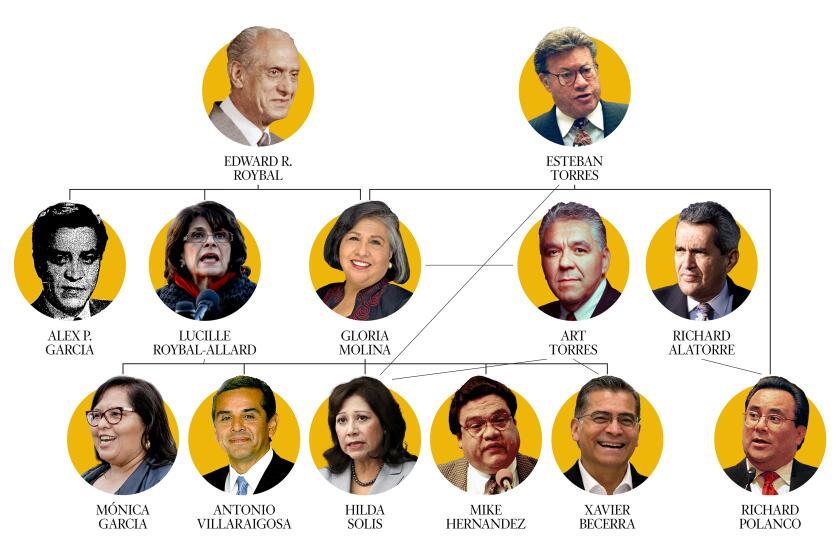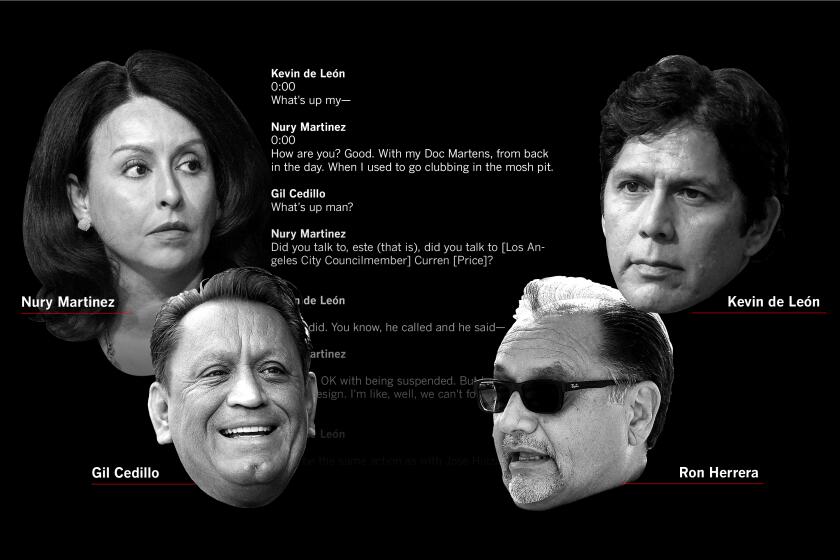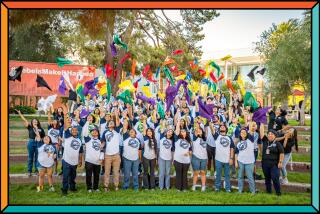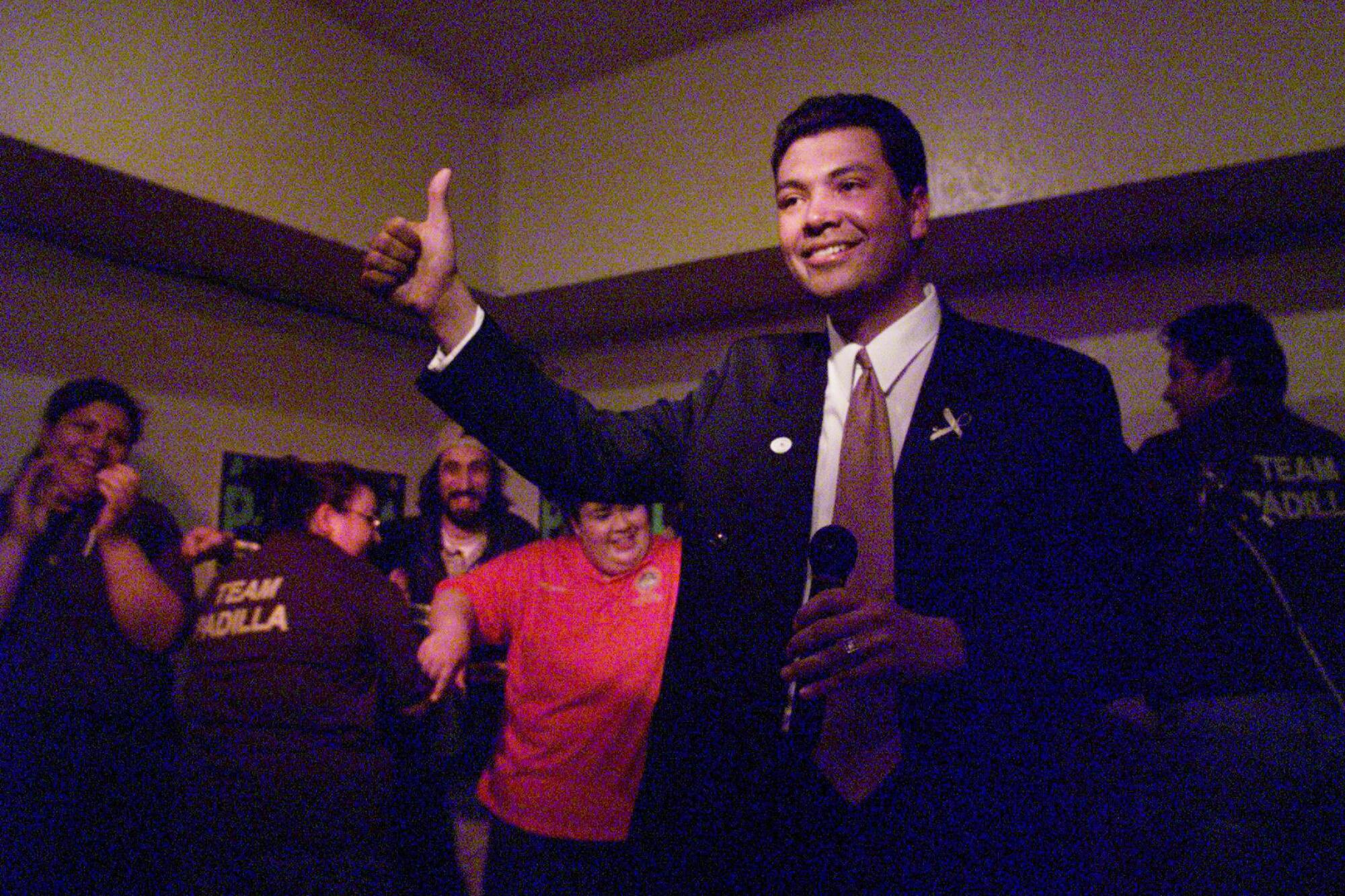
Second in a four-part series on how Latino political power has changed Los Angeles
PART II: THE SAN FERNANDO VALLEY MACHINE SPEAKS
Alex Padilla was a 22-year-old managing his first election campaign when advisors issued a challenge: Make sure the kickoff party for your guy has at least 100 guests.
The candidate in the 1995 assembly race: Tony CĂĄrdenas, who had never run for office before. They seemed like a political odd couple. CĂĄrdenas, 10 years Padillaâs senior, was a strapping real estate agent. The tall, deep-voiced Padilla wrote satellite software for Hughes Aircraft.
The two had known each other less than a year but hit it off immediately. They were the sons of Mexican immigrants who settled in Pacoima and attended Mary Immaculate Catholic Church.
Elementary school? Telfair. High school? San Fernando High, where white teachers and counselors told them they would never amount to anything.
The road to influence has been full of trials and triumphs. From the Eastside to the Valley to South L.A. to Southeast L.A. County, columnist Gustavo Arellano dives into the key moments and alliances.
Both left the northeast San Fernando Valley for college â CĂĄrdenas graduated from UC Santa Barbara and Padilla from MIT. Each realized the only way to make things better for the Valleyâs growing Latino community, in an era of anti-immigrant sentiment across California, was to elect politicians who looked like them.
CĂĄrdenas would be their test run.
âAnd so I had the sense to start with making three phone calls,â Padilla told me over Zoom. âI called one of Tonyâs brothers, because Tony is the youngest of 11. So I figured between the siblings, their spouses and their kids, weâre going to get a good chunk.â
He called another friend who came from a family of 11. And then another big family.
âWhen the political advisors came in,â Padilla continued, âthey were like, âMan, howâd you pack the room on short notice?ââ
He let a beat pass, then grinned.
âThatâs how we roll.â
CĂĄrdenas easily won, becoming the first Latino state legislator from the San Fernando Valley. Today, heâs a congressman and Padilla is Californiaâs first Latino U.S. senator. The duo, who room together in D.C., frequently cite that initial campaign as the template they used to construct an L.A. political dynasty worthy of the British royals.
Two years after CĂĄrdenasâ win, Padilla successfully managed the state Senate campaign of Richard Alarcon, who became the Valleyâs first Latino council member until Padilla replaced him in 1999. As CĂĄrdenas and Padilla spent the next decade hopping between Sacramento and City Hall, their campaign volunteers â almost all fellow San Fernando Tigers â became their staffers, then elected officials who followed the playbook of their bosses.
âWhen you leave Pacoima, nine times out of 10, you donât come back,â CĂĄrdenas told me last fall at Mykeâs Cafe, a Pacoima pool hall turned hip Mexican American diner that features photos of him and Padilla near the entrance. âYouâre like, âIâm out. Iâm in Santa Clarita. Iâm like âThe Jeffersons,â you know? Iâm moving on up and moving on out.â â
He stopped to dilute his horchata with water.
âBut I came back. Alex came back. A handful of us came back.â
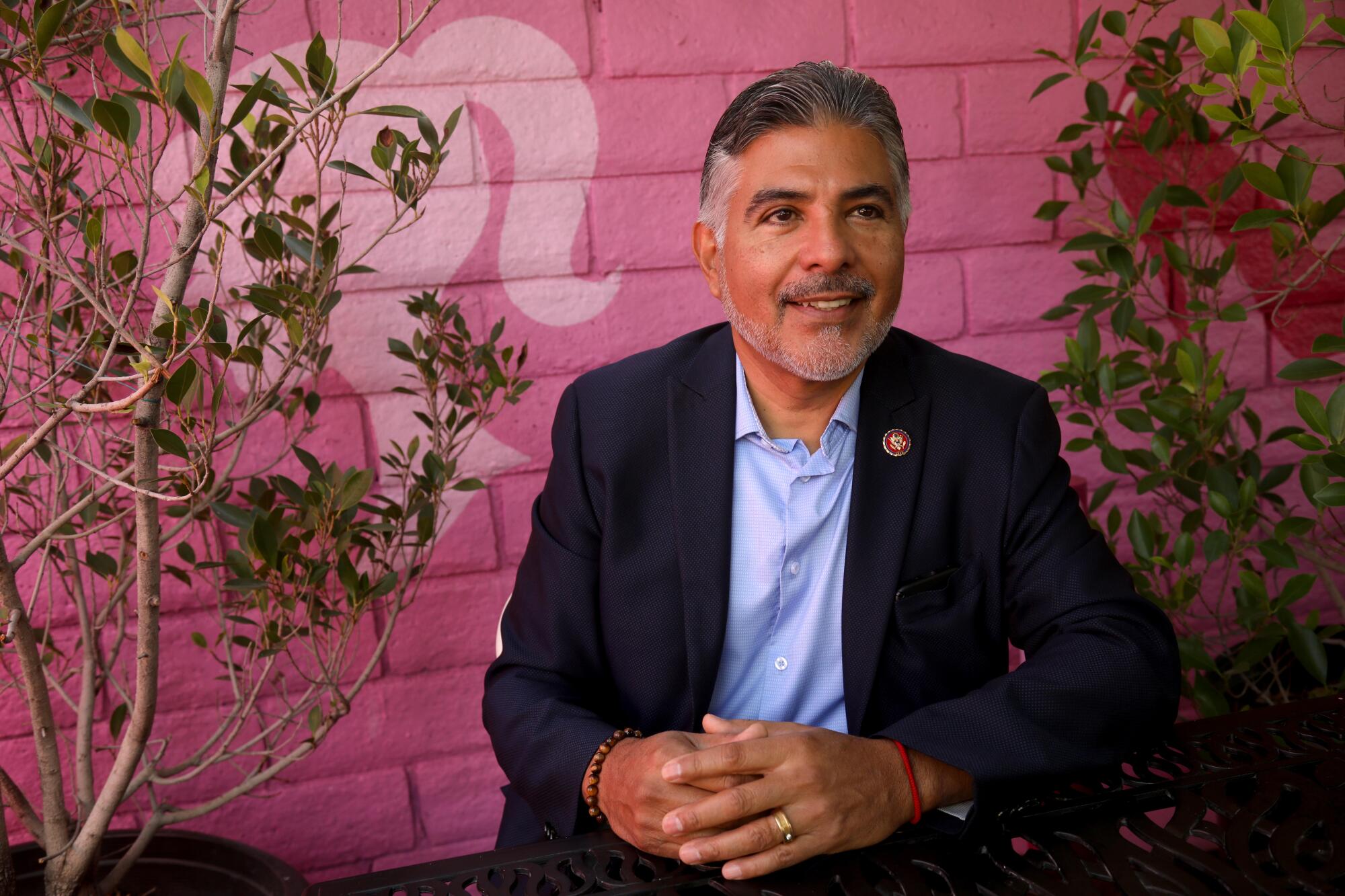
The CĂĄrdenas-Padilla dynasty has so dominated Valley life that Councilmember Imelda Padilla (no relation to Alex) didnât realize the region âhad something special going onâ until she left for UC Berkeley in the late aughts and heard her Chicano Studies classmates talk about running for office in their hometowns.
âTheir communities never had had representation,â she said. âAnd to be very honest, I just kind of had an assumption that every community was like mine.â
In Southern California political circles, the Valley Latino network is spoken of in jealous tones. Itâs frequently contrasted with the Eastside, which has produced L.A.âs only Latino mayor in modern times, two state Assembly speakers and a state Senate leader in an overwhelmingly Latino region â but only after decades, and in spite of endless squabbles. CĂĄrdenas and Padilla, by contrast, created their empire in a less-Latino area within a generation, making sure to clip any potential internecine drama â or push out those who got in the way.
Connections among Latino politicians in Los Angeles can get confusing. We attempt to decipher the oldest political trees: the Eastside and the San Fernando Valley.
CĂĄrdenas didnât flinch when I asked if he was offended at the word âmachine.â
âPlease think of us like people used to view the Berman-Waxman machine,â he responded.
He was referring to former U.S. Reps. Henry Waxman and Howard Berman, political kingmakers whose chosen candidates ruled the Valley while CĂĄrdenas was growing up.
âLook at those guys,â he continued. âTheyâre really going out there helping people get elected, participating in democracy at the highest levels. They meant [machine] in a positive way. ... I donât want people to make it seem like itâs a negative.â
But recently, the CĂĄrdenas-Padilla political clan has wobbled like never before.
The trouble started last fall after the leak of a secretly recorded conversation that captured then-council president Nury Martinez, then-Councilmember Gil Cedillo, Councilmember Kevin de LeĂłn and then-Los Angeles County Labor Federation president Ron Herrera talking about how to grow Latino political power at the expense of Black power.
The most racist remarks were uttered by Martinez, who served for years under CĂĄrdenas and Padilla as a get-out-the-vote wizard before running for office herself.
Throughout the secretly recorded conversation, Martinez complained that outside forces were stopping Latinos from gaining a third council seat in the Valley.
âDonât mess up the Valley,â Martinez said at one point, ââcause weâre cool in the Valley.â She resigned within days of the tapeâs release.
A few weeks after my conversation with CĂĄrdenas, he announced that this term would be his last. He has endorsed San Fernando Valley Assemblymember Luz Rivas to replace him in Congress. The news stunned the Valleyâs political watchers, who are wondering why the 60-year-old CĂĄrdenas wants to step away from something he and Padilla so carefully built.
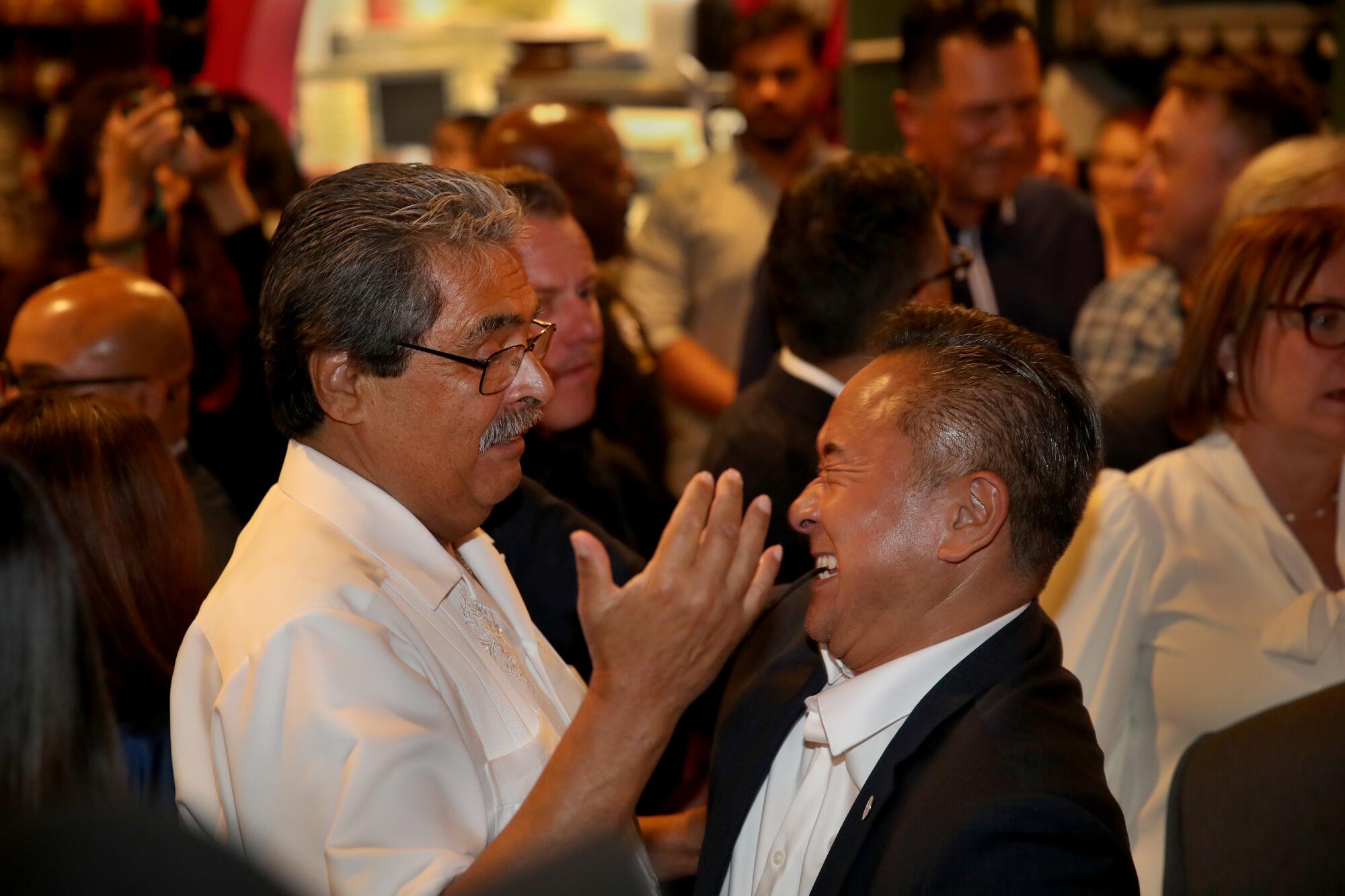
For decades, Latinos in the San Fernando Valley were a community twice ignored.
Pushed by redlining and segregation into the industrialized northeast communities of Pacoima, Sun Valley and the city of San Fernando, they barely registered a blip in popular depictions of the region as Americaâs suburb. They were ignored by local politicians and, cut off from the Eastside, barely figured in discussions about Latinos in Los Angeles.
When James Acevedo moved to the Valley in the 1980s to work as a deputy for Assemblymember Richard Katz, he found an âinsulated community much more in touch with their Mexican rootsâ than his native East L.A.
âThey needed political power,â said Acevedo, who interned for political giant Gloria Molina. âThey needed influence. They needed someone to listen to them.â
That someone was Richard Alarcon, a former high school teacher who by the time he ran for City Council in 1993 was a deputy to Mayor Tom Bradley. Acevedo registered thousands of new Latino voters, while Alarcon sold himself to white residents as a Valley native first and a Latino incidentally, winning by fewer than 300 votes.
Alarcon and Acevedo then got behind CĂĄrdenasâ first Assembly campaign â the one Padilla was managing. Once in Sacramento, CĂĄrdenas roomed with Assemblymembers Cruz Bustamante and Richard Polanco, the Eastside politico who was then chair of the Latino Legislative Caucus.
âThey were my teachers,â CĂĄrdenas said. âThey taught me you canât sit there and have a beer and talk about how weâre going to change the world. You got to put your heart and soul into it.â
CĂĄrdenas hired Padilla as his district director while giving him time off to help on campaigns across California. Sleeping on floors in offices, the wunderkind gained the experience he needed to manage Alarconâs uphill 1998 state Senate race. Helped by a last-minute $181,500 Polanco donation, Alarcon beat Katz â Acevedoâs old boss â by 31 votes in the Democratic primary, then easily won the general election.
âAs time went on,â Padilla said, âwe were intentional about the type of people we were trying to work with.â That meant enlisting friends and staffers with their same pedigree and ideals to run.
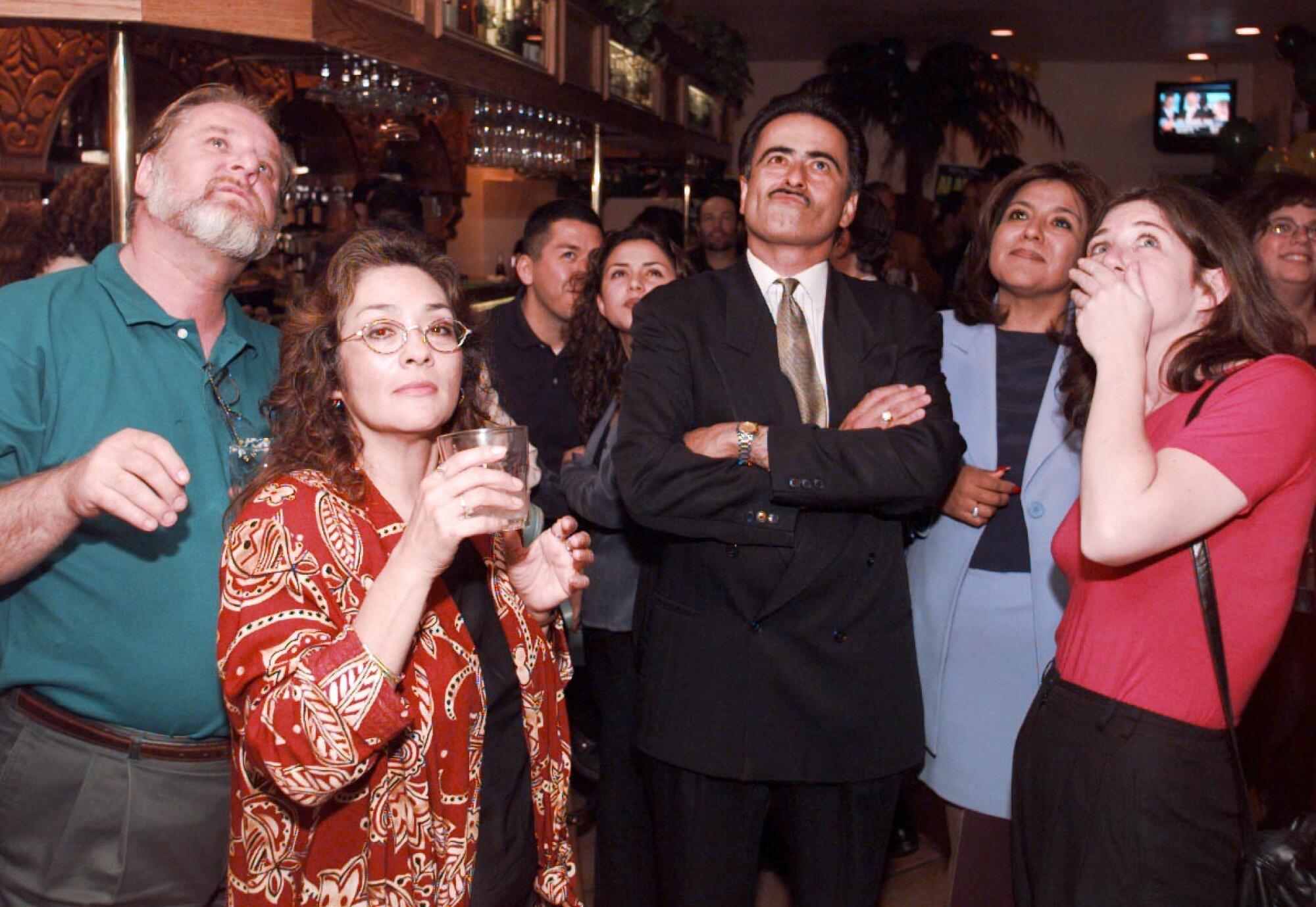
But when Padilla decided to run for Alarconâs open City Council seat, Alarcon balked â Padilla was too young and inexperienced, he argued.
âRichardâs a good guy,â CĂĄrdenas said. âRichard has done wonderful things as an elected official. But from my vantage point, he very quickly lost the vision aboutâ what they were supposed to do.
Padilla easily beat Alarconâs chosen candidate and became L.A.âs youngest council president two years later at 28. He used his newfound power to help James Hahn beat Antonio Villaraigosa in the 2001 mayoral race. The following year, Padilla called on Villaraigosa and other Eastside leaders to fight off Valley secession.
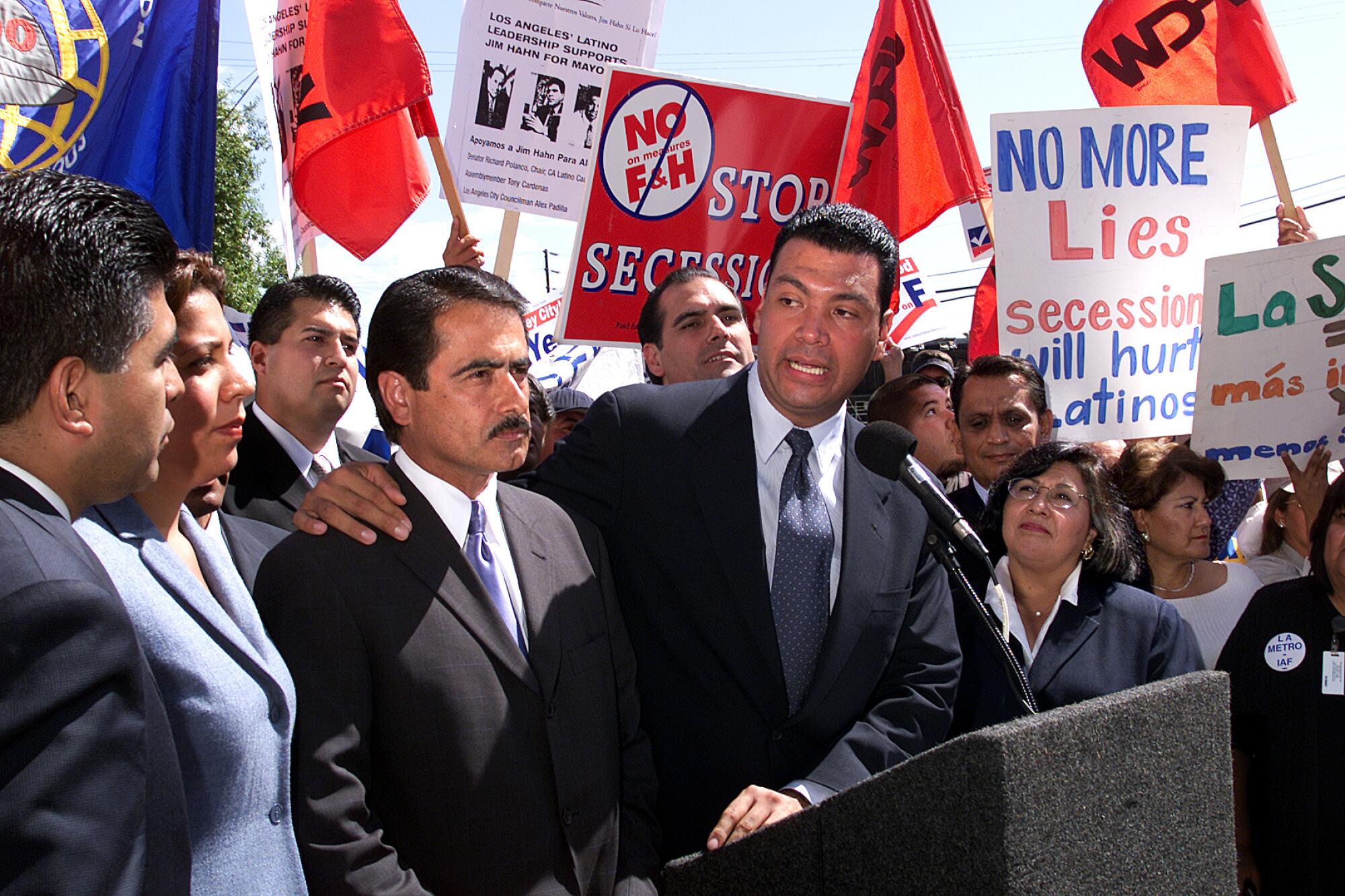
At a news conference in Mission Hills a month before the secession vote, Padilla spoke as L.A.âs Latino leaders looked on. On his left were Eastside royalty â Molina, Villaraigosa, then-Assemblymember Cedillo â and newcomers, including City Atty. Rocky Delgadillo and LAUSD board member Jose Huizar. To the right were the Valley upstarts: CĂĄrdenas, San Fernando Mayor Cindy MontaĂąez and Alarcon.
âSometimes, some of us donât walk in lockstep,â Molina told reporters. âBut on this issue, we are united, we are strong, and we are going to work hard to defeat the secession drive.â
Alarcon served in Sacramento and City Hall for 11 more years until his career ended after jurors found him and his then-wife guilty of voter fraud. The convictions were later overturned, but his banishment from the movement he helped to foster was permanent.
In a back booth at James Restaurant in San Fernando, Alarcon was philosophical about his exile.
âTony voted for all my stuff, and so [the split] didnât stop the work,â he said. âI didnât want to name the next elected officials. I just wanted to create the path.â
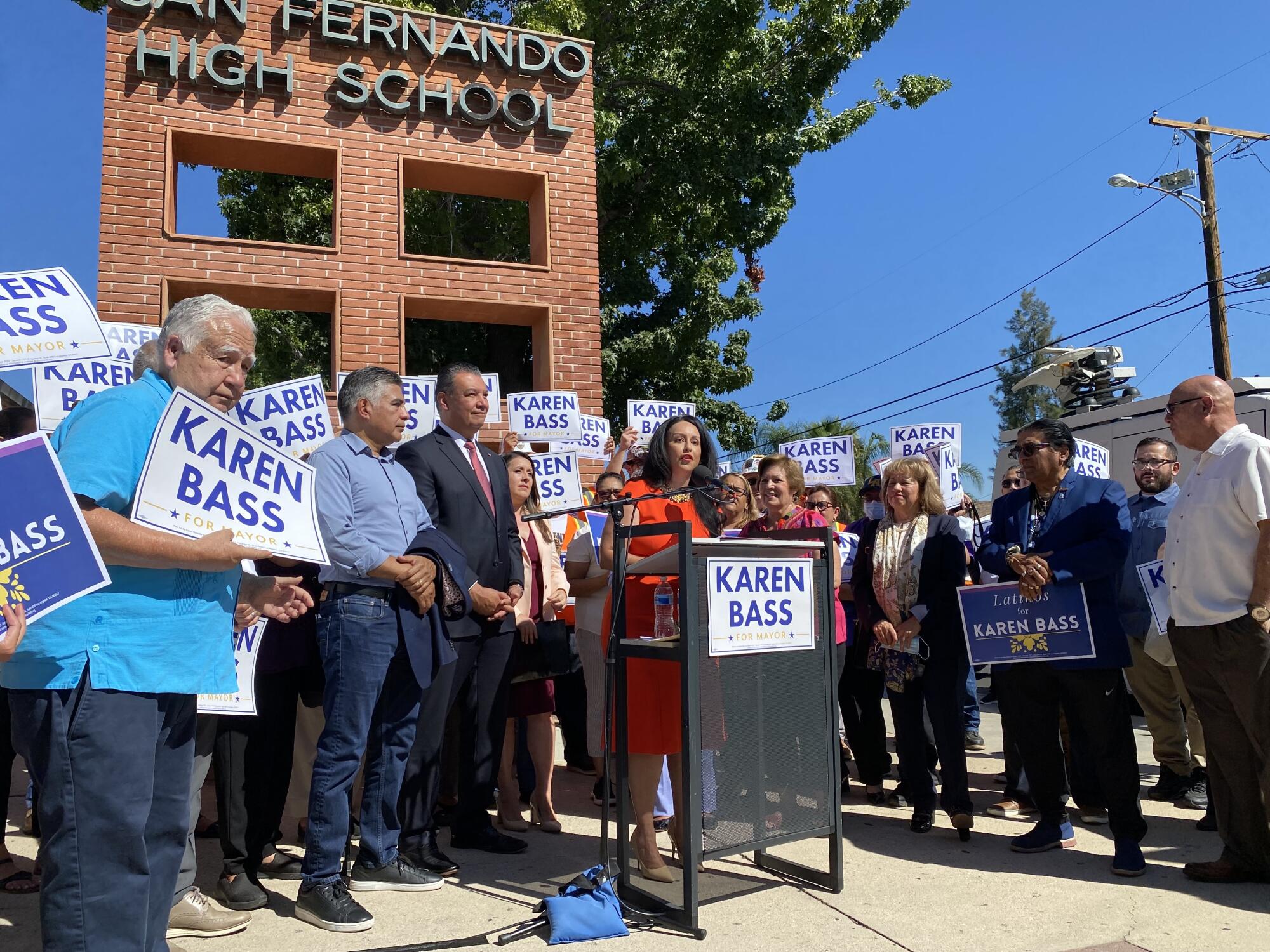
By the mid-aughts, CĂĄrdenas and Padilla were planning for the second generation of Valley Latino candidates. They gathered weekly with other players to talk shop, bouncing around what Padilla joked was the Valleyâs âdiner circuitâ until the meetings moved to their homes because âwe couldnât go places without constantly being interrupted.â
Acevedo, rich from his day job as a developer, retreated from the spotlight once critics began to accuse him of being a puppet master.
âThe only thing we wanted to do was become part of the political establishment,â he said. âThere was nothing nefarious about it.â
Eastside politicians began to approach Padilla for favors instead of the other way around once he became Californiaâs first Latino secretary of state in 2013, the same year CĂĄrdenas joined Congress. In Padillaâs telling, they admitted their envy at what the duo had created.
â[They said], âYeah, we had a good thing going on the Eastside, but we couldnât pull it together. We ended up with a lot of infighting. You guys donât repeat that, all right?â â
CĂĄrdenas credits âtremendous disciplineâ and ânot losing sight of âitâs not about meâ, itâs weâ for their crewâs success.
But their pupils tested that resolve.
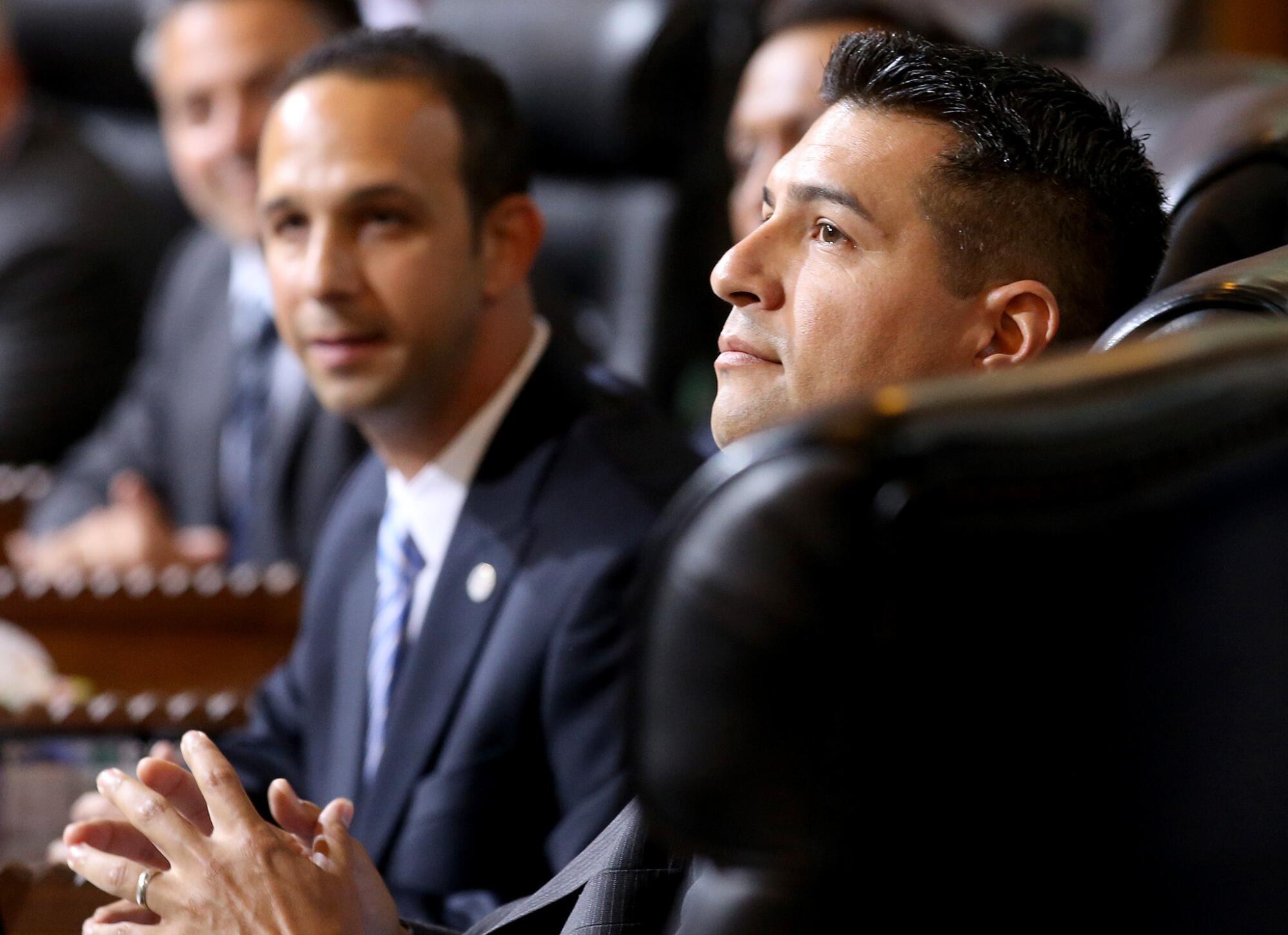
Felipe Fuentes, whose family was at CĂĄrdenasâ first campaign kickoff and who went on to serve as a deputy mayor, Padillaâs chief of staff and an assemblymember, surprised his mentors by stepping down from his council seat in 2016 to work as a lobbyist. Fuentesâ former chief of staff, Raul Bocanegra, resigned from the Assembly in 2017 after a Times investigation found a trail of sexual harassment allegations against him.
Then there was Martinez, as brilliant and hard-nosed a political mind as Padilla and married to Gerry Guzman, a former district director for Fuentes and Bocanegra. She joined the L.A. Unified school board in 2009, then beat MontaĂąez â ostracized by the machine after losing to Padilla in a state Senate primary â in 2013 to succeed CĂĄrdenas on the City Council.
Martinez became council president in 2020, the second Latino to do so after Padilla. Voluble and not afraid to wield her newfound power, she was the stylistic opposite of her mentors â but she followed their Valley game plan. She became the public face of the Valley machine and appeared with CĂĄrdenas, Padilla and Rivas at a news conference in 2022 to endorse Karen Bass for mayor. The location? Their alma mater, San Fernando High.
Two months later, The Times broke the story about the secretly recorded tapes.
A bombshell recording has thrown L.A. politics into chaos. What was really being discussed? L.A. Times reporters and columnists pick it apart, line by line.
That same day, Padilla called Martinez and asked her to resign. âItâs best you hear it from me before you hear it through the press,â he said he told her.
The U.S. senator called her again the following day with the same appeal. When she wouldnât budge, he went public with his request. She lasted two more days.
The two were close enough that they vacationed together with their spouses. CĂĄrdenas and Padilla had tolerated Martinezâs brusqueness because she was one of them, even as underlings warned that she would eventually embarrass the group. When it finally happened, Padilla had no regrets about asking for her resignation.
âWe know why weâre doing this and why weâre building this,â Padilla said of the scandals that have hit his squad, âand when thereâs someone who falls short of that through conduct, itâs heartbreaking. It takes away from the agenda or the progress.â
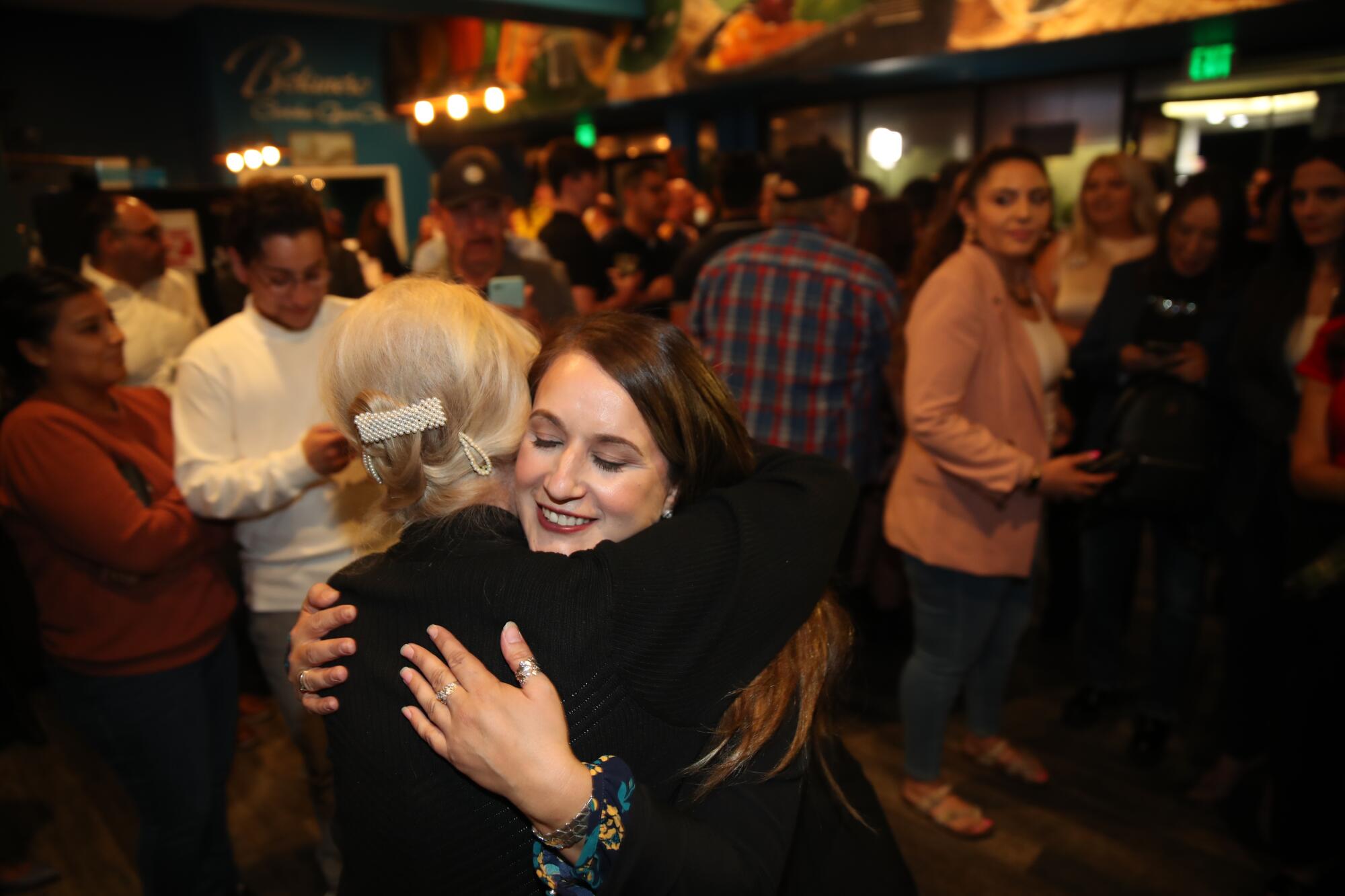
The third generation of Valley Latino political power was crowned last year, when Imelda Padilla won the special election to replace her former boss, Martinez. She handily beat Marisa Alcaraz, another Valley native who once worked for Alarcon and was endorsed by MontaĂąez, the former assemblymember who was back on the San Fernando City Council until her death last year at age 49. Imeldaâs chief of staff is Ackley Padilla, Alexâs brother, who held the same position under Martinez.
CĂĄrdenas offered congratulatory words, as did Valley congressmember Brad Sherman and L.A. County Supervisor Lindsay Horvath. Councilmembers John Lee and Marqueese Harris-Dawson were in attendance, as was Acevedo, clad in a white guayabera.
One of Imeldaâs supporters was state Sen. Caroline Menjivar, a former Marine who won her seat in 2022. The only elected Valley Latino officials who endorsed Menjivar were Councilmember Monica Rodriguez, a former Alarcon aide, and L.A. Unified school board member Kelly Gonez, who defeated Imelda for the seat in 2017.
Menjivar is the daughter of Salvadoran immigrants who grew up in Reseda. Although she had once worked as a staffer for Martinez, those bona fides werenât enough for CĂĄrdenas. He backed her opponent, Daniel Hertzberg, who was running to replace his father, Bob Hertzberg.
âI didnât go to San Fernando High, but Iâm worthy of my own experiences,â Menjivar wryly said. Sheâs the first person of Central American descent and the first LGBTQ+ Latina to represent the Valley in Sacramento. âIt was hard to get here because I was the outsider. Some of them [the Valleyâs elected Latino officials] didnât even take my calls, and it broke my heart.â
She has moved past that slight and hopes that CĂĄrdenas, Alex Padilla and their protĂŠgĂŠs will accept more outsiders like her.
âIf me, Tony, Monica, Kelly and Imelda get together, weâre going to get everyone involved,â Menjivar said. âBut we have to really, really work together. And you can do that without bringing anyone else down.â
In our conversation at Mykeâs Cafe, CĂĄrdenas looked back and also toward the future. In his decade on Capitol Hill, he secured tens of millions of dollars in federal funds for Valley nonprofits and led the main fundraising arm for the Congressional Hispanic Caucusâ political action committee.
His announcement that he was backing Rivas to replace him revealed the short bullpen that he and Padilla have. The two, along with Rivas, are supporting an outsider, San Fernando Mayor Celeste Rodriguez, for Rivasâ old Assembly seat. They picked her over one of their own: Walter Garcia, a San Fernando High graduate and former communications director for Councilmember Monica Rodriguez.
The day we talked, CĂĄrdenas said nothing about his decision to leave elected office.
But I knew something was going on with him. He spoke with such forceful candor about his legacy over our hour-long conversation that we never even ordered lunch.
âIt gives me goose bumps to know that the vision that we had back thenâ paid off, CĂĄrdenas said.
When I asked if he wanted to replicate the Valley way across the United States, CĂĄrdenas responded with one word:
âAbsolutely.â
More to Read
Sign up for Essential California
The most important California stories and recommendations in your inbox every morning.
You may occasionally receive promotional content from the Los Angeles Times.

